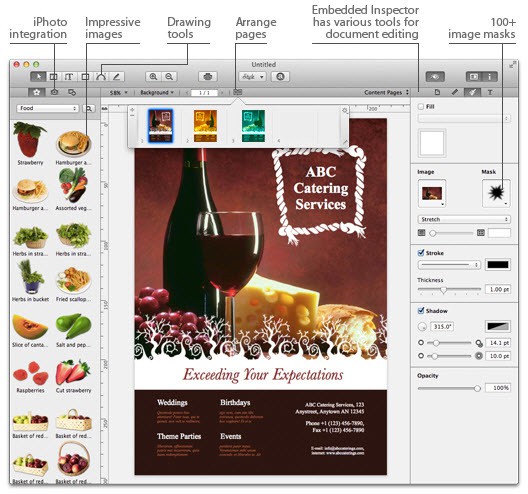

- #App store swift publisher how to#
- #App store swift publisher code#
- #App store swift publisher Pc#
- #App store swift publisher download#
- #App store swift publisher mac#
#App store swift publisher code#
The first line of code extracts the message by using the host property of the URL structure. For instance, if another app launches textreader://Hello!, then the URL will be embedded in the URL object. The custom URL will look like this:įrom the arguments of the application(_:open:options:) method, you can get the URL resource to open. This app serves as a receiver app that defines a custom URL and accepts a text message from other apps. We’re going to create another app called TextReader.

Let’s see how we can add a custom URL to our QR Reader app. Interestingly, Apple allows developers to create their own URLs for communicating between apps. The other URL is for sending a text message using Whatsapp. The first URL is used to open the news feed of the user’s Facebook app. In the sample QR codes, I included two QR codes from third party apps:
#App store swift publisher how to#
We will discuss more about custom URL scheme in the next section and show you how to workaround this issue. This explains why the app cannot open Facebook and Whatsapp even it can decode their URLs. 771183+ 0800 QRCodeReader - canOpenURL : failed for URL : "fb://feed" - error : "This app is not allowed to query for scheme fb" All you need to do is to put the following code at the beginning of the launchApp method:Ģ017- 12- 12 12 : 58 : 26. With this property, it is quite easy for us to fix the warning issue. When the UIAlertController object is dismissed, the presentedViewController property will be set to nil. For example, when the QRScannerController object calls the present(_:animated:completion:) method to present the UIAlertController object, the presentedViewController property is set to the UIAlertController object. In iOS, when you present a view controller modally using the present(_:animated:completion:) method, the presented view controller is stored in the presentedViewController property of the current view controller.

To resolve the issue, we have to check if the app has presented a UIAlertController object before calling the present(_:animated:completion:) method. So the app may present another UIAlertController when there is already a UIAlertController presented. The launchApp method is called every time when a barcode or QR code is scanned. Note that the app only works on a real iOS device. If you compile and run the app, you’ll have a simple QR code reader app.
#App store swift publisher download#
To start with, first download the QRCodeReader app. When the QR code is decoded, the app will launch the corresponding app based on the type of the URL. In this chapter, we’ll make it even better. So far, the demo app is capable of decoding a QR code and displaying the decoded message on screen. If you haven’t read the QR code tutorial, go back and read it before continuing on. We will reuse the QR code reader app that was built in the previous chapter. You’ll see what I mean in a minute.Īs usual, we will build an app to demonstrate the use of URL schemes. Additionally, you can create a custom URL scheme for your own app so that other applications can launch your app via a URL. Similarly, you can use another URL scheme to launch the Message app for sending an SMS. You can use a specific URL scheme to launch the built-in phone app and dial the number automatically. For example, let’s say your app displays a phone number, and you want to make a call whenever a user taps that number. He's been gaming since the Atari 2600 days and still struggles to comprehend the fact he can play console quality titles on his pocket computer.The URL scheme is an interesting feature provided by the iOS SDK that allows developers to launch system apps and third-party apps through URLs. Oliver also covers mobile gaming for iMore, with Apple Arcade a particular focus. Current expertise includes iOS, macOS, streaming services, and pretty much anything that has a battery or plugs into a wall. Since then he's seen the growth of the smartphone world, backed by iPhone, and new product categories come and go.
#App store swift publisher mac#
Having grown up using PCs and spending far too much money on graphics card and flashy RAM, Oliver switched to the Mac with a G5 iMac and hasn't looked back. At iMore, Oliver is involved in daily news coverage and, not being short of opinions, has been known to 'explain' those thoughts in more detail, too. He has also been published in print for Macworld, including cover stories.
#App store swift publisher Pc#
Oliver Haslam has written about Apple and the wider technology business for more than a decade with bylines on How-To Geek, PC Mag, iDownloadBlog, and many more.


 0 kommentar(er)
0 kommentar(er)
